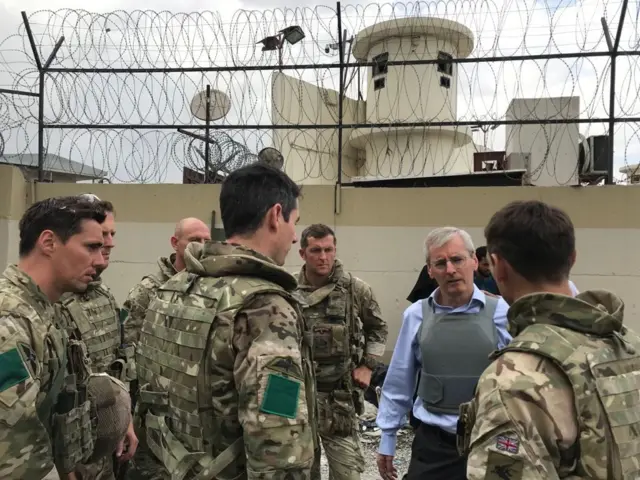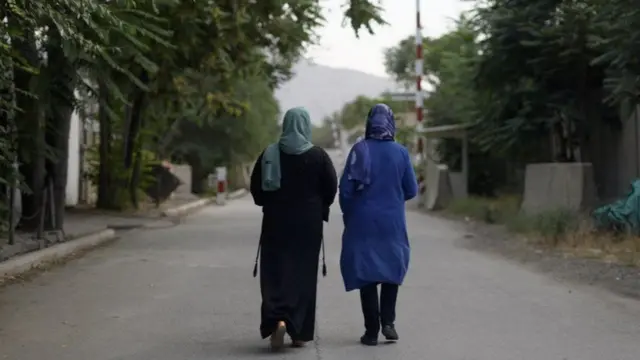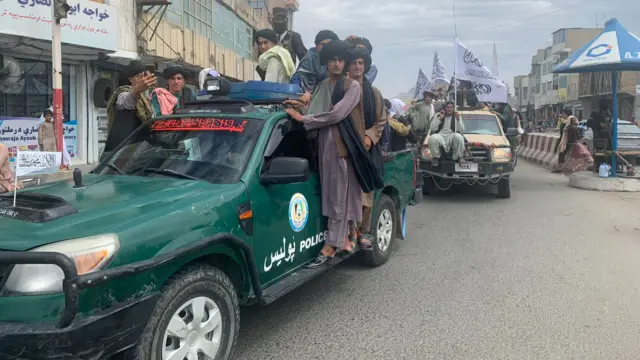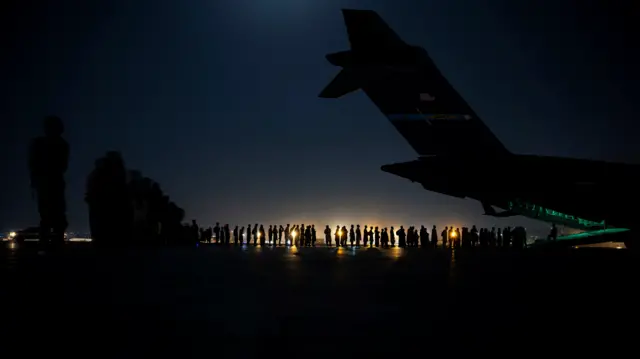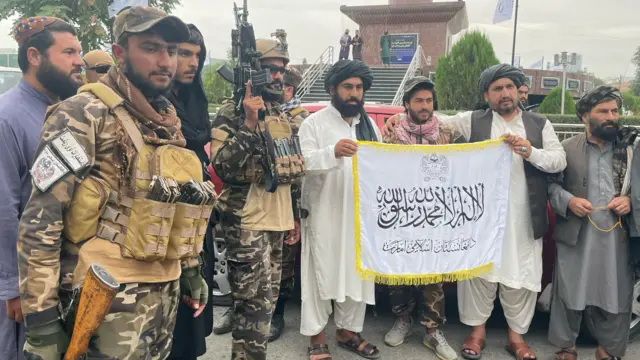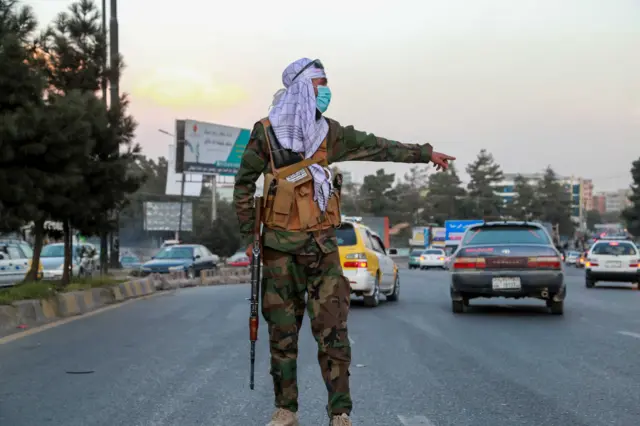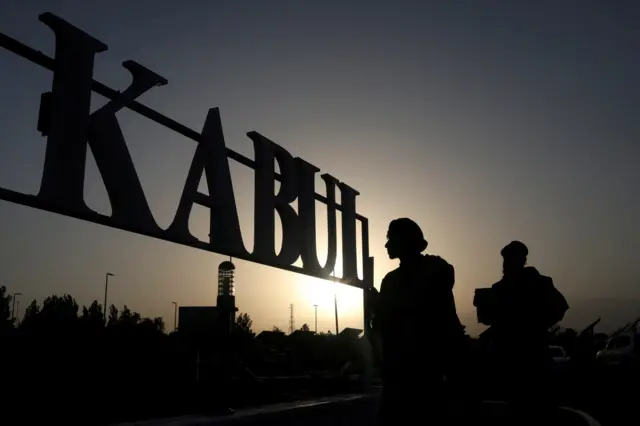What’s life like in Afghanistan now?published at 10:42 BST 15 August 2022

Women face restrictions under Taliban rule
When the Taliban regained control, how they planned to govern was uncertain - particularly when it came to women and girls.
Suhail Shaheen, a spokesman for the group, said last year the country’s new leaders would respect the rights of women and minorities"as per Afghan norms and Islamic values".
But come 23 March 2022 - the first day of the school year in Afghanistan - female students arrived to find closed gates and armed Taliban guards.
Despite assurances only days earlier that schools would reopen for girls above sixth grade, they were barred from secondary education.
The number of women in work also fell, with a report from the International Labour Organisation, external (ILO) in January finding that 16% less Afghan women were in work by the end of the third quarter of 2021, compared with 6% of men.
The ILO predicted this figure would decrease further – to be 21% lower than before the Taliban takeover – by mid-2022.
Restrictions apply personally, too. Women must be accompanied by a male guardian for all but short journeys and are required to cover their faces in public.
Away from human rights, the Afghan economy has been left shattered. Around 75% of public spending used to come from foreign grants. They have stopped since the Taliban came to power, though humanitarian aid has continued, and around $9bn (£7bn) of Afghanistan's foreign reserves have been frozen, leading to a shortage of both funds and physical cash in the country.
A report from the World Bank in April warned that more than a third of the population was now no longer able to meet basic food needs.
